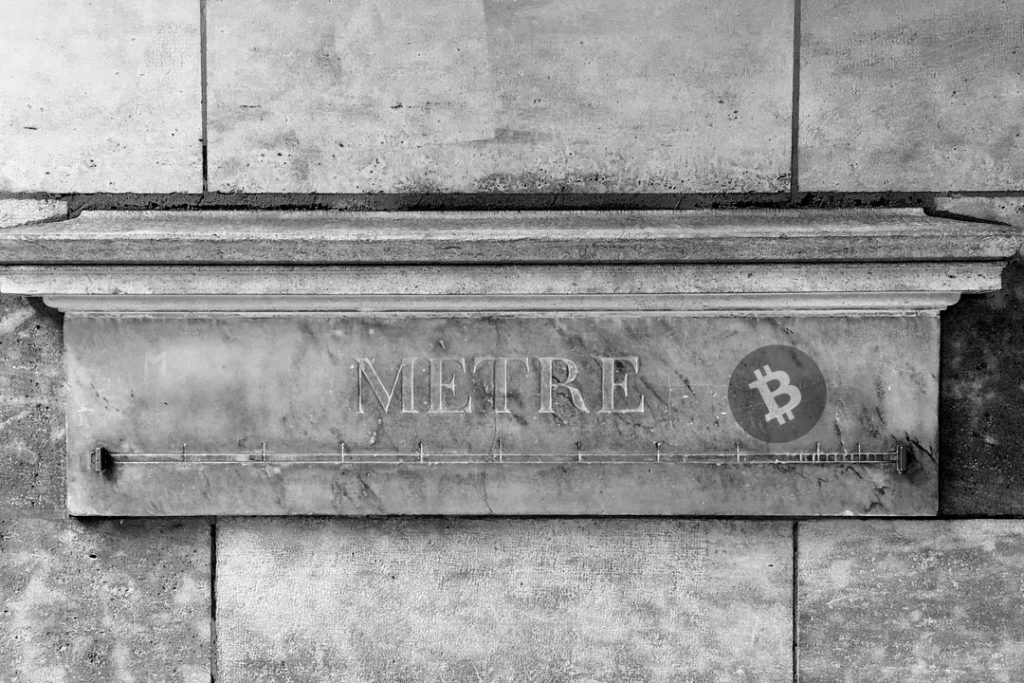Have you ever wondered whether the folding ruler you have at home is really as long as it claims to be? And more importantly: how would you even find out? A simple question—yet with a surprisingly intricate answer.
This article explores why Bitcoin represents the first and only economic measurement system ever created by humankind. The challenges it solves mirror those humanity faced in the long and often chaotic history of length measurement. The development of the metric system, with all its missteps and breakthroughs, offers a remarkably fitting analogy.
Many still perceive Bitcoin’s fixed limit of 21 million units—and the 100 million sub-units per Bitcoin—as some sort of clever design quirk or deliberately imposed scarcity. But that’s a misconception. Far from being a “fun fact,” the 21-million limit is the very core of the system. To understand why, we need to travel back a few thousand years.
The Ancient Quest for Standards
The history of length measurement must be understood in the broader context of standardization—of weight, of volume, of virtually everything that structured early societies. As soon as human organization became more complex, defining standards was not a luxury but a necessity.
The founder of the Chinese Empire, Qin Shi Huang (260–210 B.C.), famously introduced fixed standards across multiple domains: units of length, units of weight, even regulated hairstyles for soldiers. Warfare, trade, and craftsmanship were all drivers of this early push for uniformity.
The Roman Empire faced similar pressures. Vast territories, monumental architecture, and extensive trade routes demanded consistent measures. And yet Rome still used no fewer than 14 different units for length. The basic unit, the pes—the Roman foot—measured about 296 mm, but the true original reference was lost to history. Even physical objects used as reference measures differed ever so slightly. Tiny inconsistencies, large consequences.
The Scientific Revolution: A New Need for Precision
By the 16th century, the scientific revolution dramatically raised the stakes. With Copernicus, Galileo, and later Newton, humanity began asking more precise questions—and needed more precise answers.
Isaac Newton himself relied on the Paris “pied de roi”, measuring roughly 324.84 mm, for his groundbreaking Principia (1687). But at the same time, various “lines”—fractions of the pied—coexisted. Clockmakers used one kind of line, other professions another. Conversions were possible, yes, but imprecise. Like navigating between different regional currencies, the diversity of units created friction and error.
This new age of rationality set the stage for the Enlightenment and ultimately the French Revolution—an event that, interestingly enough, became the big bang of universal length measurement.
The Birth of the Metric System
In 1793, driven by the Academy of Sciences, France introduced the world’s first truly universal length unit: the meter. Defined as the ten-millionth part of the distance from the equator to the North Pole (passing through Paris), it was an ambitious attempt to root measurement in nature rather than tradition.
But a conceptual breakthrough alone wasn’t enough—humanity needed a physical reference. So the length was transferred onto a metal rod. This “original meter,” housed in Paris, became the sole authoritative standard. A problem immediately became obvious:
If there is only one reference—and almost no one can verify it—how trustworthy is it? Don’t trust. Verify.
A revised meter sample, created in 1799 from a platinum-iridium alloy, became the new prototype. Yet even it was fragile; damage to its ends could shift the entire definition of length. By 1889, the world moved to a line measure—a more resilient method.
Because the meter was too important to be controlled by a single nation, decentralization became essential. Thirty identical copies of the prototype were created and distributed to metrological institutes worldwide. Germany received copy number 18, drawn by lot. The message was clear: trust through decentralization.

This is one of the original 30 copies of the measuring stick considered to be the original meter.
Dematerialization and Universal Verifiability
The 20th century refined the meter further. In 1960, the definition shifted to the wavelength of light—making it verifiable without a physical object. The meter was now dematerialized.
In 1983, the definition was tied to the speed of light, an immutable constant. Each redefinition preserved continuity with the original meter, within the limits of measurement technology.
The history of the meter, step by step, solved three challenges:
-
Standardization
-
Decentralization
-
Independent verifiability
Does this sound familiar?

Bitcoin: A Measurement Standard for Economic Value
Bitcoin approaches money the way science eventually approached length: as something that requires a fixed, universal, and independently verifiable standard.
Despite this, no other currency—fiat or digital—functions as a valid economic measurement system. None possess the essential trait: an absolute boundary.
Because money represents a claim on all goods and services in the market, any expansion of the money supply distorts economic relationships. The “measurement unit” inflates.Bitcoin, like the primal meter, is a response to a standardization problem. It is:
fixed (21 million units, no more),
globally verifiable (anyone can audit it),
decentralized (no central authority),
dematerialized (anchored in mathematics and consensus, not in a physical object).
Where the meter solved the problem of physical measurement, Bitcoin solves the problem of economic measurement—a far more politically and socially contentious domain. After all, while all humans have aligned interests in agreeing on length, those who control or manipulate money supply can benefit immensely from distortion.
And that is exactly why Bitcoin’s design isn’t arbitrary or playful. It’s foundational. It’s the first time humanity has created a monetary unit that behaves like a scientific constant.


